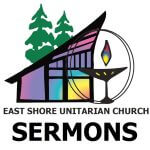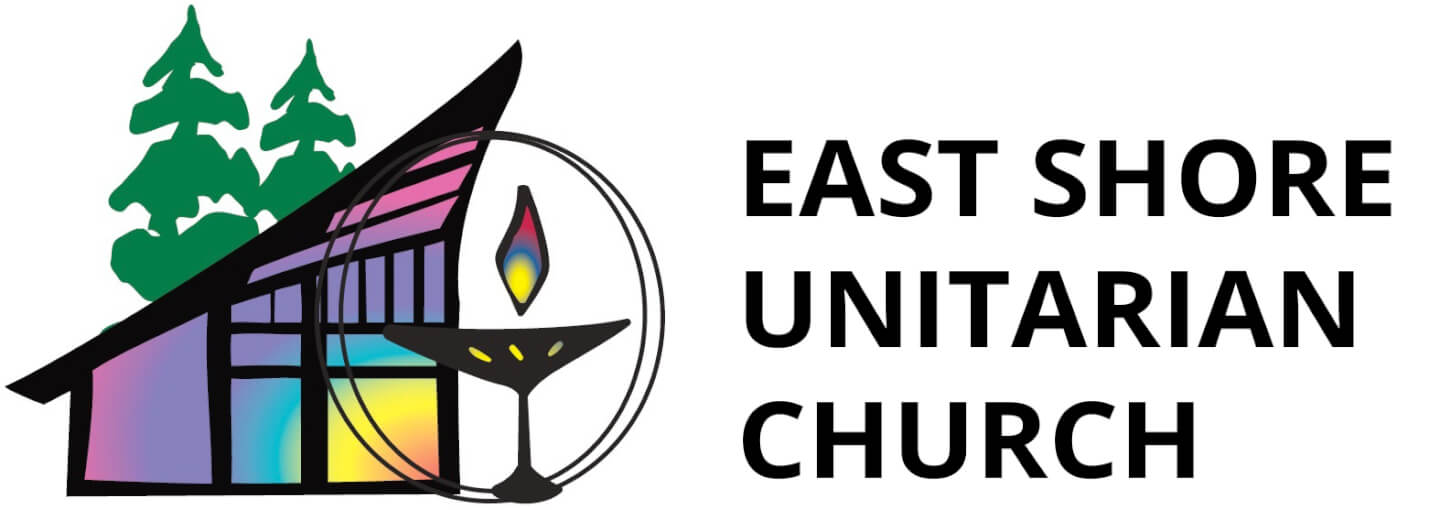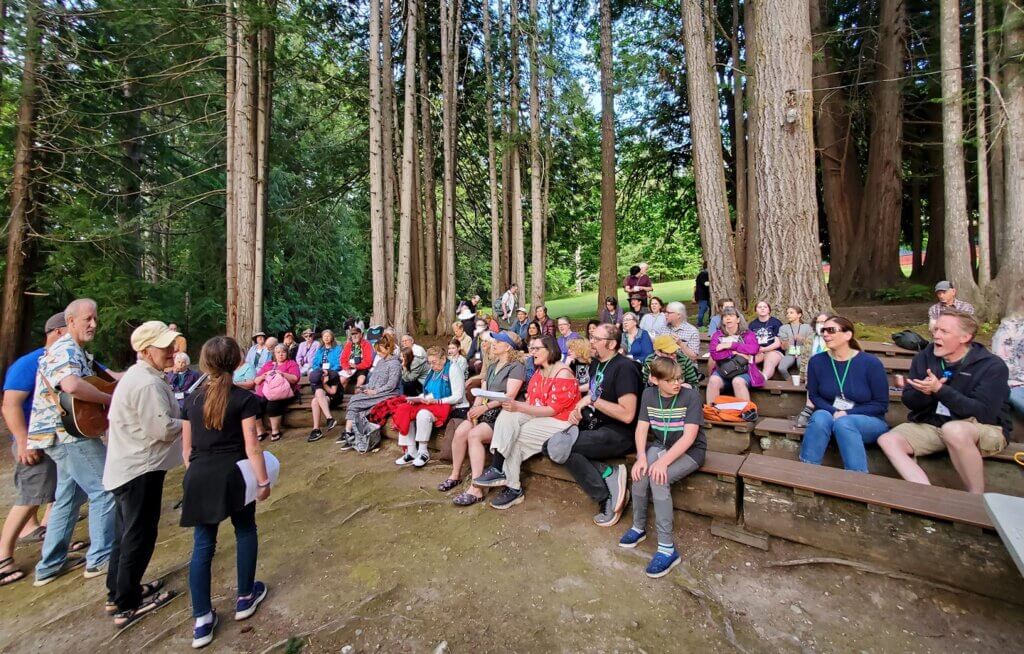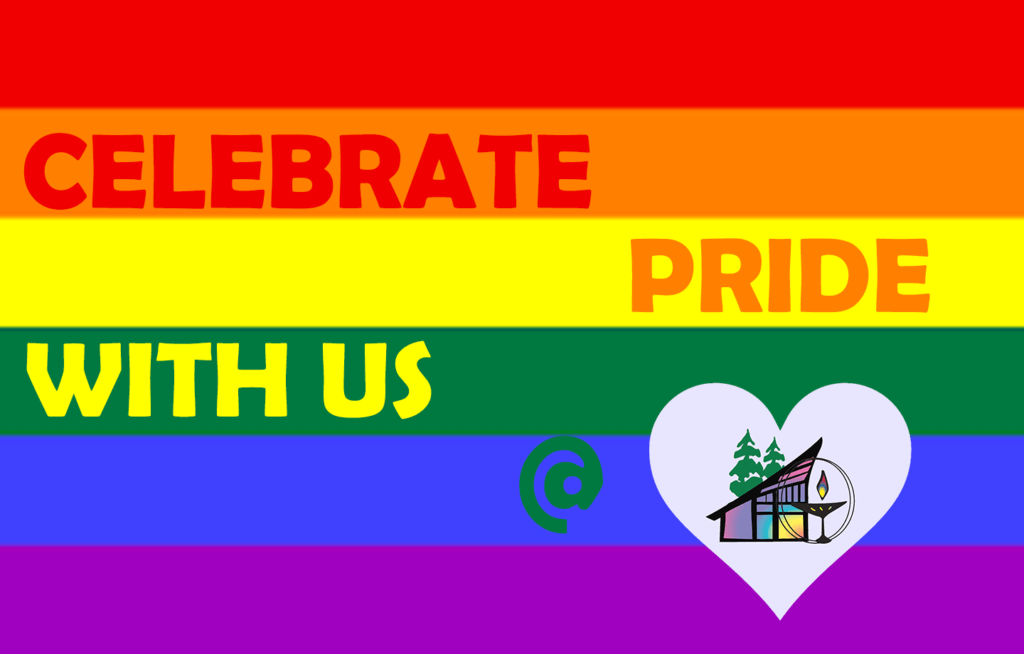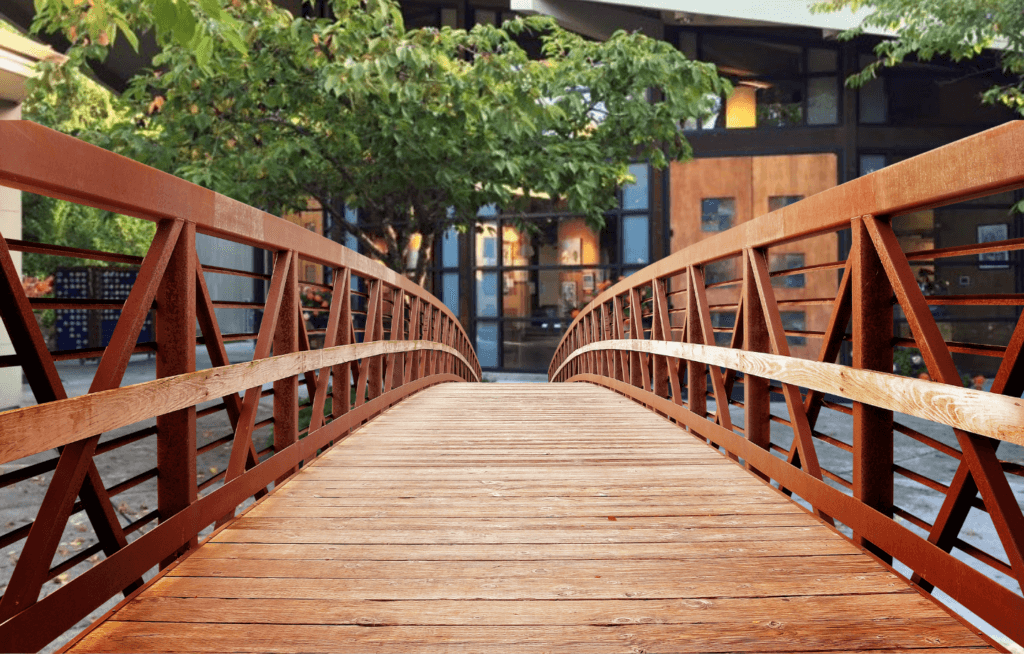
- This event has passed.
Building a Bridge to Belonging
Sunday, April 7 @ 10:30 am - 11:30 am


Images hold power. They shape and inform how we perceive the world. They also influence how we treat people around equity, accessibility and inclusion. Join us as we learn to break down societal barriers in order to break through, break open and break free into a more expansive, liberated world for people of all abilities.
Rev. Jennifer DeBusk Alviar (she/her) is an ordained, Unitarian Universalist minister whose unique call is to expand the welcome table of hospitality, inclusion and liberation. To this end, she cultivates positive relationships with community organizations and diverse faith traditions actively engaged in the healing work of bridge-building and social change. In particular, she advocates for accessibility and inclusion for brain injury survivors, along with those who identify as neurodivergent. Rev. Jennifer received her Master of Divinity degree at Starr King School for Ministry in Berkeley, California. She currently lives with her family on the indigenous land of the Duwamish people known as Seattle, Washington.
How to Attend
We encourage masks in all buildings. Read more about our In Person Guidelines here.
• To virtually attend, please Zoom in using room number 989 3107 9078, passcode: chalice.
• To phone into the service, call 669-900-6833, Meeting ID: 989 3107 9078.
For those joining, please mute as soon as you enter the room, so everyone can hear. Please note, the services will be recorded, but at this time, there are no plans to share the recording.
More Information
Religious Education for children and youth happens during worship on Sundays. Children and youth arrive in the Sanctuary for the just a little bit and welcome in Sunday with a story and song. Then, they attend their own programs in the Education building. Learn more here!
If you don’t have a chalice, but want to light one, check out our Making a Chalice at Home page.
In person services are followed by coffee hour.
Children’s Story
Sermon Audio
Building a Bridge to Belonging
Sermon Text
See the FULL SERMON with IMAGES here
I invite you to join me in imagining a garden.
In this garden, we cultivate a diverse ecosystem with rich, nourishing soil. A hearty environment where plants and species of all kinds can grow and thrive to co-create vibrant life together. A fertile green space alive with cross-pollination. This is the gift of a healthy garden in its most natural state.
HUMAN/ NATURE CONNECTION
The same is true with people. Especially folks who may grow more like wildflowers. Ones who cross-pollinate ideas and ways of thinking and behaving that may diverge from the usual garden variety. Yet if we cultivate the soil for a healthy, diverse ecosystem, then healthy, diverse people grow and thrive. Isn’t this what we want for our community? A place where all people are welcomed and affirmed in their natural state of wild beauty, wonder, vitality and human flourishing?
NEURODIVERSITY
Well, I am one of those wildflowers. My brain and body diverge from the usual garden variety. I am considered “neurodivergent.” Neurodiversity reflects diversity in the human brain, body and behavior. So how does this play out for someone, like me, with hidden disabilities? Here is how I engage with the natural world as a vital ally in my advocacy work around equity, accessibility and inclusion.
CHILDHOOD ILLNESS
Growing up, I was always a wholesome, nature-loving kid. This photo was taken in 1977 on a family backpacking trip in Northern California. I was six years old. This image evoked in me a sense of wonder and delight when a tiny, red ladybug landed in the palm of my outstretched hand.
Just a few days later, my perspective on the world drastically changed.
Here I am as a critically sick patient lying in the intensive care unit at Stanford University’s children’s hospital. My neurosurgeon, Dr. Jerry Silverberg, diagnosed my condition. It turns out that I was born with a cluster of abnormal blood vessels known as an arteriovenous malformation. AVM for short. On that day, the blood vessels burst leading to a life-threatening brain hemorrhage.
COGNITIVE IMPACT & NATURE
The cognitive impact of my medical condition occurred in the left hemisphere of my brain near the speech and language center. The bursting of blood vessels left me temporarily voiceless and silent. In the months following my surgery, I regained my speech. Yet I noticed a marked difference in how I accessed my words. I didn’t “think” my way into speech by gathering ideas in my head. Instead, I “felt” my way into speech through embodied movement. This sensory, kinesthetic approach helped me navigate my executive functioning challenges around word-finding difficulties and memory recall.
For example, I grew up near greenbelt districts and open space preserves on the indigenous land of the Ohlone people in Palo Alto, California. I thrived in this eco habitat. Nature offered a tranquil, calm space for me to listen and observe. I used my senses to track my thoughts without distraction. It ignited in me a newfound sense of agency and vitality.
After graduating from college, I backpacked for a month in the wilderness of Alaska with National Outdoor Leadership School.
This awakening to nature, soul and embodied movement led me toward seminary at Starr King School for Ministry in Berkeley, California.
I earned a Master of Divinity degree specializing in ecology and theology as an interfaith minister ordained in the Unitarian Universalist tradition.
For many years, I crafted a series of nature-based sermons that incorporated a multi-sensory approach toward preaching. Each worship service included photos of my sports-related travels. Bicycling 5,200 miles coast to coast from Bellingham, Washington to Portland, Maine.
Canoeing down the Missouri River in Montana with my husband, daughter and my parents.
Joining the local community crew team for rowing excursions along Lake Washington in Seattle.
Hiking in the mountains of Mexico at a music festival.
And walking along the lush, green Highlands of Iona, Scotland for a Celtic pilgrimage.
I loved my life as a contemplative eco-traveling athlete preacher.
GRIEF
And yet, as seasons change, life changes too. 2020 marked a season of tremendous change for all of us during the global health pandemic. This timing happened to coincide with my own threshold crossing into midlife. I turned 50 years old in the summer of 2020. This pause caused me to slow down and pay attention to my body in new ways. I experienced a deep fatigue that I hadn’t noticed before. I was exhausted!
Not just physically from all my sports-related travels. But emotionally too. And I felt something else stirring inside me. Something akin to grief. Francis Weller expressed this feeling well in his book, The Wild Edge of Sorrow: “Grief and love are sisters, woven together from the beginning. Their kinship reminds us that there is no love that does not contain loss and no loss that is not a reminder of the love we carry for what we once held close.”
Grief and love. Love and grief. Together. Inextricably intertwined. This is a wise and poignant reminder. But not an easy truth to embody. The truth of my life was this: I longed to experience a sense of belonging. The ache of loneliness I felt centered around my own particular timing in history.
My brain injury occurred in 1977 – 13 years prior to the Americans with Disabilities Act of 1990. At that time, no language existed for neurodiversity or disability justice. Instead, all that existed was the medical model of curing and fixing what was broken. But what if I didn’t feel broken? Instead, what if I explored ways to break down societal barriers in order to break through, break open and break free into a more expansive, liberated, vibrant way of life? And so began my life-long journey of working toward equity and justice leading to greater healing and wholeness.
And yet, I hadn’t factored in the grief and exhaustion embedded in what it means to live in a world neither designed nor intended for neurodiverse people like me. Do you know what it feels like to be invisible? Let me bring it home to you unvarnished in the words of Adrienne Rich: “When someone with the authority of a teacher describes the world and you are not in it, there is a moment of psychic disequilibrium, as though you had looked into a mirror and saw nothing.”
Invisibility takes many different forms. I am a white, cis-gender, able-bodied woman who lives with hidden disabilities. I acknowledge wholeheartedly how the intersectionality of race, gender and other marginalized identities further impact neurodiverse people around barriers to accessibility and inclusion. This is why disability advocates have shifted language and focus from “disability rights” to “disability justice.” In doing so, it centers the voices and lived experiences of people from underserved, underrepresented communities within this movement.
So my question around invisibility is this: “How do we hold grief and love in such a way that moves us toward liberation with our souls intact?” Let me repeat that. “How do we hold grief and love in such a way that moves us toward liberation with our souls intact?” Grief without love embitters us. Love without justice cannot lead us toward transformation and healing.
NATURE POETRY
This question is the very soul work that each of us is called to live into through our own unique perspectives. As someone who experiences the world kinesthetically, I find myself drawn to reflect on this question by engaging my body in nature. In particular, an arts-based approach to nature through photography and poetry. This intuitive process offers grounded presence without analysis. I simply show up each day curious and open to what my nature walks might reveal to me.
On one bright October day, I strolled through Colorado’s beautiful aspen groves.
I marveled at the sunlight filtering through the golden aspen leaves contrasted against the brilliant blue sky and elegant, white bark. Along my path, I noticed a deep wound pierced in the trunk of one of the aspen trees.
Instinctively, I reached out my hand to touch its wound. I felt my way along the edges of the exposed bark. My eyes softened in recognition and tenderness to the mystery of how wounds come to be. Perhaps lightning? Fire? Who knows. I wasn’t there. Yet the tree’s presence moved me without any need for words. This aspen tree – scarred and wounded as it was – embodied wholeness, integrity and dignity. In witnessing the tree’s wound, I felt seen and witnessed in my own invisible wounds. No explanation necessary. Just a simple act of solidarity. In this quiet moment of reciprocity with nature and soul rooted in earth, I found the words I needed to write my poem for that day.
WOUND
Whispers in the woods
Of grief & pain
Untold stories of longing
Necessity to be witnessed in the quiet company of nature’s healing presence
Deep & ancient soul practices of grounding & renewal
ACADEMIC & RELIGIOUS INSTITUTIONS
This moment of solidarity in nature gave me the courage to speak from a more rooted place of advocacy and justice. I wanted to offer a strengths-based approach toward neurodiversity within academic and religious institutions. For example, higher education prizes excellence and leadership around the written and spoken word. Not only that, but this didactic, lecture-style approach assumes that all people process information verbally. Furthermore, it assumes that students learn best through a posture of stillness as a model of attentive listening.
As a neurodivergent person with lived experience in academic institutions from grade school to graduate school, those are a lot of unchecked assumptions. My brain and body require kinesthetic movement as a core access need. This tactile approach to learning is how I compose my thoughts and translate them into language for writing and preaching. In addition, grounding my body in nature offers a calm, sensory-friendly environment to support my epilepsy in regulating my body and reducing stress. This, too, is an access need of mine.
I began asking myself a two-part question:
- “How might we center the voices and lived experiences of neurodiverse people to design more inclusive learning spaces in academic and religious institutions?”
- “What might it look like if we shifted these institutional models toward a nature-based, embodied, multi-sensory approach toward learning to meet a wider range of access needs for neurodiverse people?”
NATURE AS UNIVERSAL DESIGN
It occurred to me that nature offers a valuable model of universal design benefiting neurodiverse and neurotypical people alike. From a healthcare perspective, U.S. Surgeon General, Dr. Vivek Murthy, highlights belonging as central to his work in healing the loneliness and isolation that he identifies as a public health crisis. We are biologically designed to be in community with others. As he eloquently puts it, “Healing is about making whole. To be a healer, you have to be able to listen, to learn and to love. …Healing leads to relationships, community and belonging.”
From an ecological perspective, human beings thrive in reciprocal relationships with nature. Robin Wall Kimmerer is a biologist, author and member of the Citizen Potawatomi Nation. She expresses reciprocity beautifully in her book, Braiding Sweetgrass: “Paying attention is a form of reciprocity with the living world, receiving the gifts with open eyes and open heart.” She offers a living, dynamic, relational sense of kinship that cultivates a deep sense of belonging through nature’s diverse ecosystems.
KUBOTA GARDEN
I decided to research public gardens as a nature-based model of belonging, reciprocity and universal design. This path led me to cultivate a relationship with the Kubota Garden.
The Kubota Garden is a stunning 20-acre landscape that blends Japanese garden concepts with native Northwest plants. It is located in the Rainier Beach neighborhood in Seattle’s south end – one of the most diverse zip codes in the state of Washington.
Fujitarō Kubota lived for 94 years from 1879-1973. He was a landscape designer who carried seeds of change both literally and figuratively. Not only did he bring seeds from his native Japan to plant in his Japanese-inspired Kubota Garden in Seattle, but he carried these same seeds to the internment camp in Minidoka, Idaho during WWII.
Fujitarō’s nature-based Shinto religion sustained his spirit in the face of racial injustice. By grounding himself in the natural world, he found the inner resources to design beautiful rock gardens within the walls of his imprisonment. The war may have contained his body, but not his spirit.
Fujitarō designed his garden in 1927. It became a public garden in 1987. Today, this tranquil green space is free and accessible to the public maintained by the Seattle Parks and Recreation. Volunteers from the Kubota Garden Foundation also contribute toward supporting the garden through plant sales, community events and garden maintenance.
KUBOTA GARDEN PARTNERSHIP
Inspired by the history and beauty of this garden, I reached out to Sophia Eicholz, the Kubota Garden Volunteer Engagement Coordinator. I asked her this question: “How might we collaborate together in designing inclusive spaces where neurodiverse brains and bodies can learn and thrive best within this nature-based environment?”
Over a period of several months, she and I explored creative partnership possibilities. Sophia shared with me a wide range of community events designed by the Kubota Garden Foundation to meet diverse interests, ages and needs. Some of these garden activities include:
- Monthly public garden tours
- A nature-based, guided meditation called Forest Bathing
- A Japanese Butoh dance performance
- Taiko drumming
- Jazz in the Garden
- An Iris Exhibition
- A Pollinator Safari
- A Soapstone Carving Workshop for Youth
- An art-inspired sculpture walk
Currently, my advocacy work around connecting neurodiverse people in nature-based learning environments is still in the early phase of development. My vision is to serve as a bridge-builder and garden liaison. I hope to invite healthcare organizations, faith-based communities and academic institutions to experience the Kubota Garden as a model for greater equity, accessibility and inclusion. This, in addition to fostering a tranquil green space model of universal design where people of all abilities benefit by grounding our bodies in nature.
BENEDICTION
Whether you are a wildflower like me who diverges from the usual garden variety, or someone who simply loves to be part of a vibrant, thriving eco-community, may you feel welcomed. May you find solidarity with those who have been scarred by struggle, yet united by nature’s gift of healing presence and reciprocity. May you find solace and kinship in honoring the wisdom that “grief and love are sisters, woven together from the beginning.” Collectively, let us build a bridge to belonging where all people are affirmed in their natural state of wild beauty, wonder, vitality and human flourishing. May it be so.
Amen, Shalom, Salaam, Namaste and Ashe.
